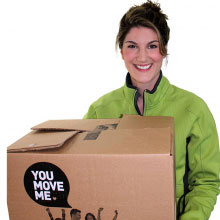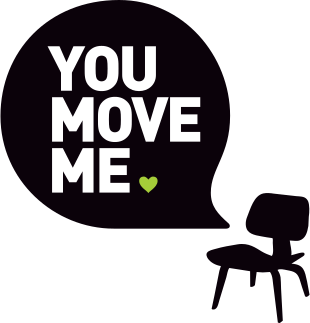How to make downsizing for seniors easier

When the weather gets warm, moving season begins. For many of BC’s retirees and seniors, moving season may mark a shift from independent living into smaller accommodation, assisted living, or other care. This transitory time is often accompanied by an inevitable and emotional downsize.
The accumulation of years creates an accumulation of “stuff” that can make the task daunting: There are mementos and knickknacks to sort, photos to archive, and files to shred or digitalize. And that’s the easy stuff! Larger items, such as furniture and appliances must be dealt with, too.
As the owner of Vancouver Island’s You Move Me, I work with seniors facing downsizing and have developed some tried-and-true methods for making this easier.
TALK IT OUT
It can be hard to admit you’re feeling overwhelmed, but communicating your needs with loved ones is the first step to releasing stress. An added bonus? They’ll roll up their sleeves and help out.
MAKE A PLAN
Visualize your new home or the space you’re downsizing. What will you need? How do you want it to look? Are there space restraints? Write down a list of what will stay.
If you’re moving to a new place, create a timeline. Identify when certain tasks need to be completed and work to that. Writing out clear deadlines and tasks to accompany them is guaranteed to make you feel organized.
Arrange to have your cable and Internet connected at your new home the day you move in. Your house will already be open, with lots of movement in and out, so the cable guy isn’t going to make a big difference. Plus, you won’t have to wait to turn on Netflix at the end of a long day.
… THEN TAKE INVENTORY
Now that the plan is clear, it’s time for an inventory. Go room to room with a list that has four columns: Keep, Sell, Donate/Gift, and Toss. Each column should include space for measurements of furniture and large items, so you can bring the right pieces to your new home (and offer reliable dimensions in online ads).
Assign items to relevant columns. Each column should correspond to a coloured Post-It or sticker. As you write, colour-code your furniture using these stickies to make moving day a breeze.
– Keep = Blue
– Sell = Yellow
– Donate/Gift = Pink
– Toss = Green
If you haven’t used something in more than eight months, you probably won’t use it again. Toss it!
LOOK EVERYWHERE!
One of the most common mistakes people make when they downsize or move is forgetting “stashes”. These are often valuable items, like money, antiques, or important documents. Turn over mattresses, look in jars, and open cupboards for loot that was saved for a rainy day.
PART WAYS
You may want to give furniture and keepsakes to friends and family. Send them a group email with a list of what’s up for grabs, and dole it out on a first-come, first-served basis.
When you’re done gifting, make some money (while freeing up space!) by posting it on free online sites such as Craigslist or Kijiji. Get antiques and other potentially valuable items appraised, so you’re sure to recoup some of their worth.
When posting an ad online, never include your home address. Make arrangements to meet potential buyers in public, and always have someone with you if they’re coming to your home.
Once you’ve gifted and sold what you can, donate to Goodwill, the Salvation Army, or charities of your choice. Many non-profits will pick up your items for free.
Finally, everything else without a clear destination or purpose can be disposed of. Remember to shred confidential papers.
PACK LIKE A PRO
Organize for the downsizing or moving day by getting boxes, packing tape, packing paper, permanent markers, and scissors or an Exacto knife. If you have one, use a cloth tool belt to keep these things handy on the day-of.
Don’t stuff every box to the brim – it will be difficult and dangerous to lift later. Describe the contents on the side of the box, along with its destination.
Remember to lift with your legs: bend your knees and keep your back straight. Get help for heavy items!
Use small Ziplock bags for screws and tape the bag to the furniture it helps assemble. All other small, loose items can be put in baggies and labelled accordingly.
Make up an overnight bag with the clothes and toiletries (including a shower curtain!) you’ll need the first night. Pack it in the car, or if it’s going in the moving truck, pack it last so it can come out first.
NESTLE IN
Downsizing and moving in such an organized way will ensure that unpacking will be the easiest part. Start with the big pieces of furniture and other large items, working your way down to the small stuff. Ideally after downsizing, you’ll have half of what you started with.
During such a stressful time, it’s important to stay healthy and rested, which means taking breaks as necessary, staying hydrated, and asking for help. The downsizing and moving process is one of the most intense times people endure, but by planning ahead and being aware of your needs, you can navigate it successfully.

